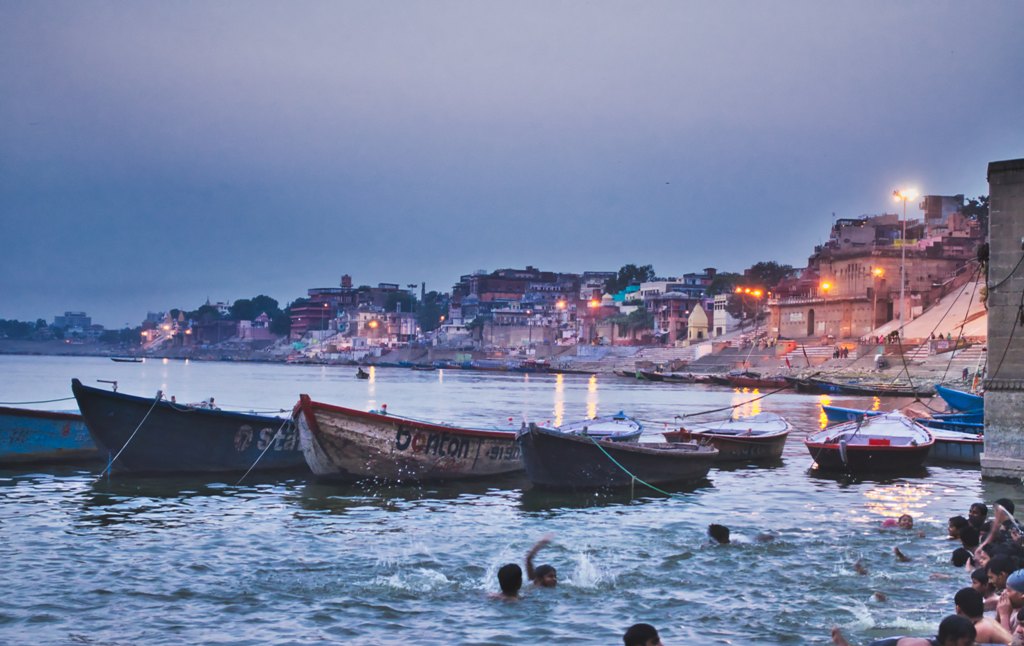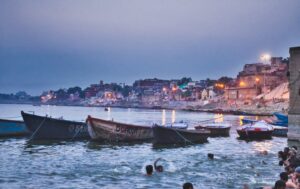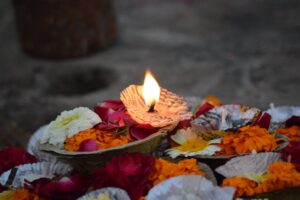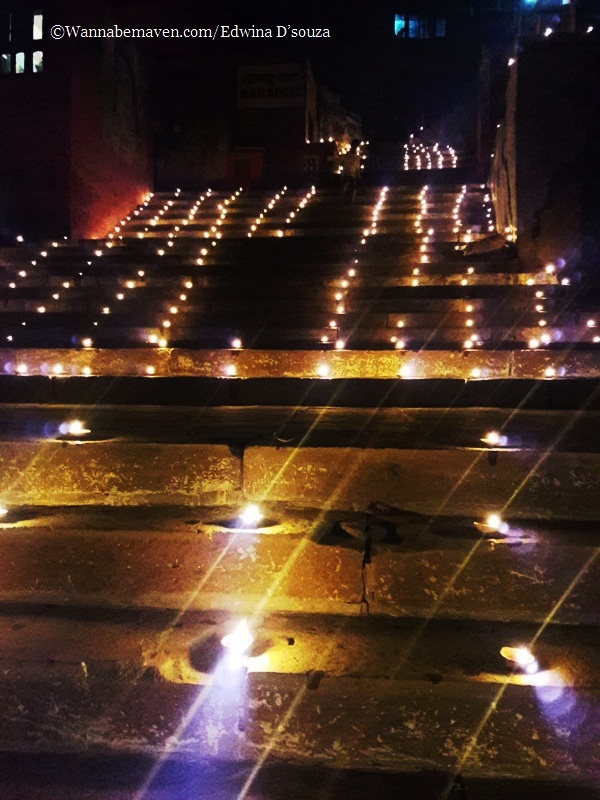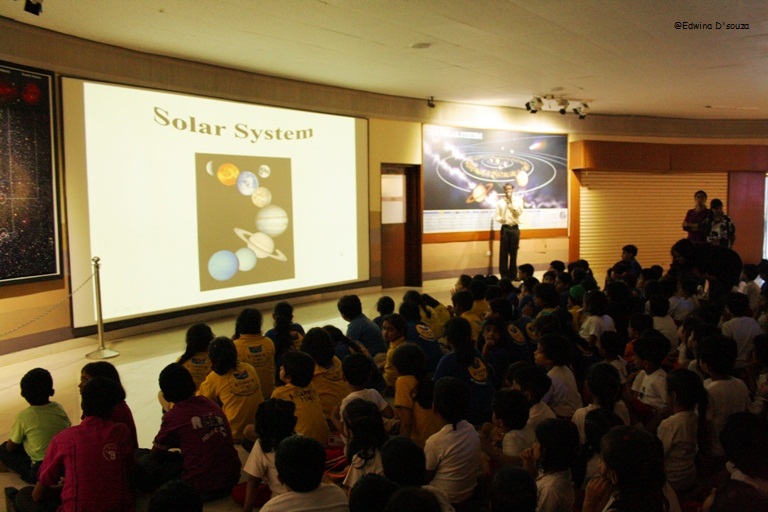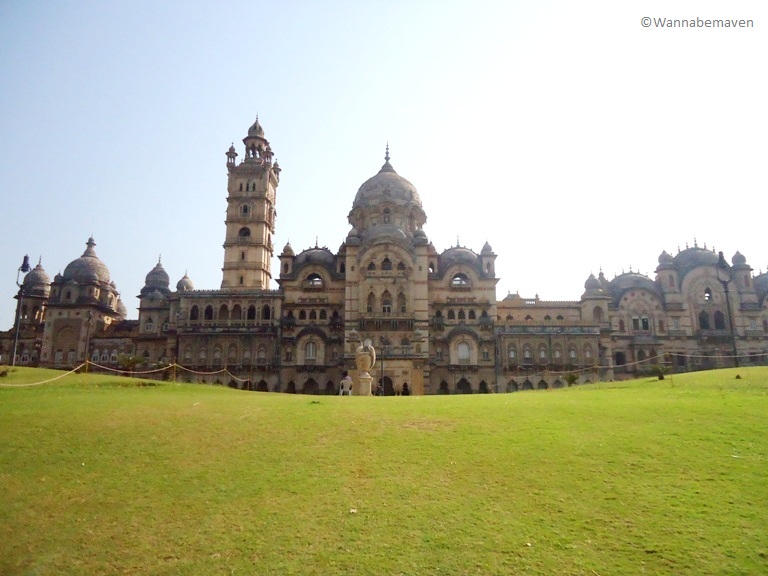I was in Jaunpur to attend a friend’s wedding. As a side trip, I visited Varanasi, 60 km from Jaunpur. I was travelling all the way to see Dev Deepawali in Varanasi. It is said that Dev Deepawali is one of the best times to be in Varanasi. And why not? Diwali is known as the festival of lights; Varanasi is the city of lights. Coincidentally, the night of our visit was also a Supermoon, a once in 68 years occurrence on Earth. Imagine all that for a sight!
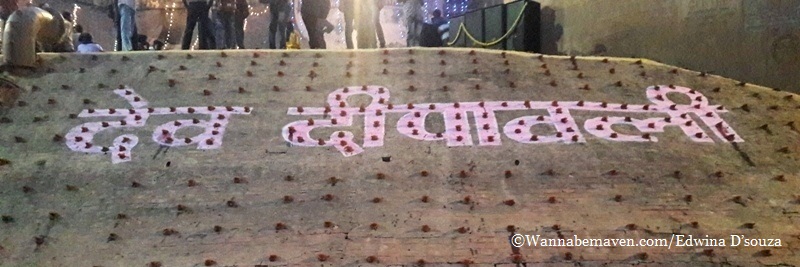
Dev Deepawali in Varanasi – Diwali of the Gods
Dev Deepavali is called the ‘Diwali of the Gods’. According to legends, Dev Deepawali marks the v-ictory of Lord Shiva over the demon, Tripurasur. Hence the festival is also called as Tripurotsav or Tripura Purnima.
The people of Varanasi believe that during Dev Deepawali, the Gods and Goddesses descend to Earth to bathe in the Ganges. Hence, some people also refer to this festival as Tripura Purnima Snan. Pilgrims wake up early morning to take a holy dip in the Ganges in a ceremony called Kartik Snan.
Deepdan during Dev Deepawali in Varanasi
While I didn’t take a dip in the Ganga because the water is contaminated, I did offer a bowl of flowers with an oil lamp in the river. During Dev Deepawali, deevotees will pray to the Ganges, considered as the holiest river in India, by lighting a candle inside a cup made of dried leaves with fresh flowers and set it afloat. Right before placing the offerings in the river, they will make a wish to the Ganges to be fulfilled. The ceremony is called Deepdan. By dusk, the entire river is gleaming from the light of thousands of floating oil lamps under the night sky.
Diyas everywhere
Clay oil lamps are symbolic of Diwali celebrations across India. The tradition of lighting oil lamps during Dev Deepawali was first started at the Panchganga Ghat in 1985. During Dev Deepawali in Varanasi, you’ll find courtyards, window panes, temples, streets and ghats decorated with millions of oil lamps everywhere.
In the spirit of the festival, the process to place clay lamps at the ghats and pour oil onto them commences in the morning. Each lamp is manually placed, and the exercise will continue throughout the day. As the sun goes down, the oil lamps are lit up and every single step at the ghats will glitter making it a spellbinding experience.
Women create beautiful flower rangolis and patterns around themes like the Shivalingam, Swastika and Om. Many also design Gods like Ganesh, Krishna and Shiva with coloured powder. Children are at their creative best with designs of cartoons. Some locals will also create designs around socially pressing issues.
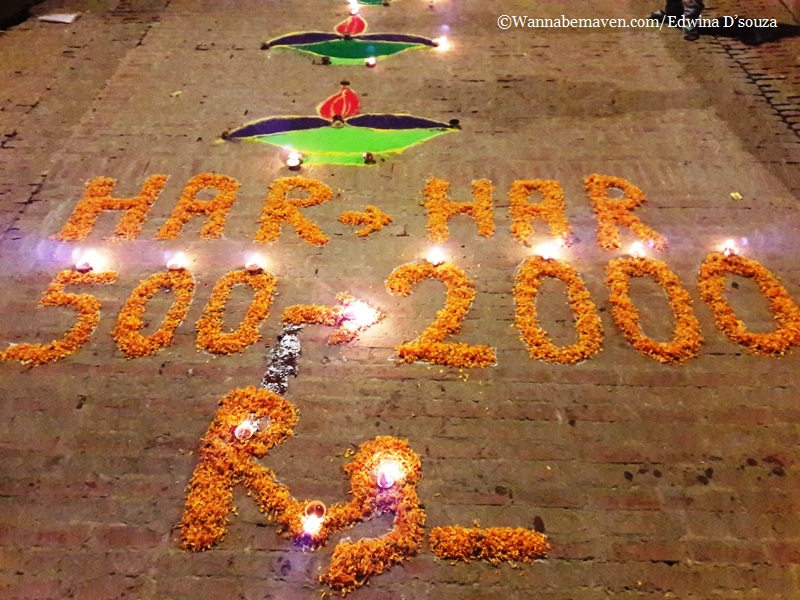
Dev Deepawali at Varanasi ghats – What to expect!
Varanasi has about 87 ghats along the Ganga with some very interesting names like Pandey Ghat, Maan-Mandir Ghat (built by Maharaja Jai Singh II of Jaipur), Lalita Ghat (built by the late King of Nepal), Manikarnika Ghat (main cremation ghat), Tulsi Ghat and Kedar Ghat. Each ghat will have their own little celebrations during the evenings.
An ideal way to explore the festivities would be to get off at Assi Ghat on the south side of the bank and start your 4 km walk towards Dashashwamedh ghat, which is the main ghat for Dev Deepawali celebrations and where the grand Ganga arti will take place.
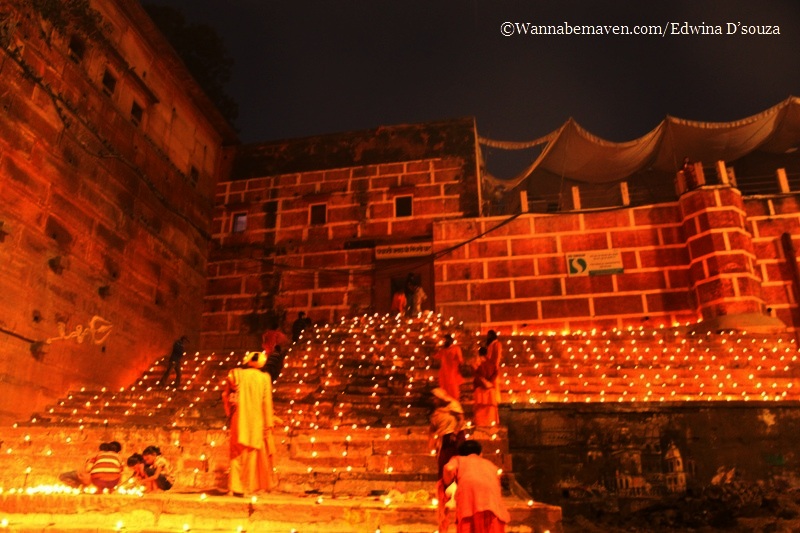
Ganga arti during Dev Deepawali in Varanasi
While artis are performed everyday by the ghats, the Ganga arti at Dashashwamedh ghat during Dev Deepawali is the most grand and elaborate one. 21 Brahmin priests will hold multi-tiered arti lamps and perform rituals in front of the Ganges that involve chanting Vedic mantras, beating drums and conch shell blowing. Each year, the religious spectacle attracts lakhs of pilgrims and tourists alike.
End your outing with a boat ride which is a quintessential way to experience life and movement by the Ganges. During Dev Deepawali, a boat ride offers a serene experience when all 87 ghats are lit up with oil lamps. Visitors get an unforgettable view of the city from the other side. The Ganges looks magical too, with the moonlight reflecting in the water with oil lamps everywhere.
Dev Deepawali – When to visit Varanasi
Dev Deepawali in Varanasi is celebrated 15 days after Diwali. Celebrations begin on Prabodhini Ekadashi, which is the 11th lunar day of Kartika and conclude on a full moon during Karthik Poornima. Since this is the busiest time to be in Varanasi, make all your travel and hotel bookings ahead of time. For the best views of the lit up ghats during Dev Deepawali, book a hotel by the banks of the Ganges. However, be prepared to climb up and down the ghat staircases each time you need to visit the city centre.
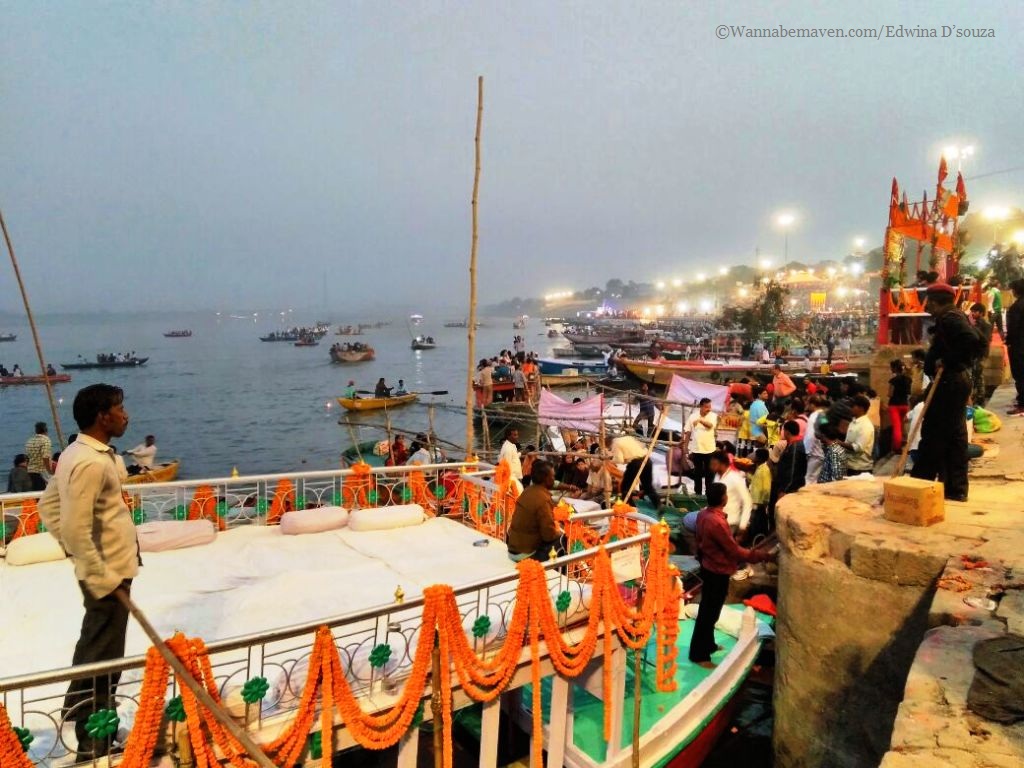
Other things to know before planning a trip to Varanasi
1) While I stayed in Jaunpur and did a day trip to Varanasi, I would recommend staying in Varanasi and doing a day trip to Jaunpur.
2) By 7pm, millions of tourists throng Dashashwamedh ghat for the Ganga arti. It’s a great experience but keep your expectations in check in terms of crowd.
3) Varanasi is a global tourist destination so most locals are exposed to different cultures and won’t be shocked on seeing a tourist. But always dress modestly.
4) Varanasi is safe to travel around – avoid wandering too far away from your hotel after it gets dark. In Jaunpur, take utmost safety precautions while travelling around at night, especially women.
==
Books to read on Banaras
Banaras: City of Light by Diana L. Eck
Banaras: Of Gods, Humans & Stories by
Kaleidoscope City: A Year in Varanasi by Piers Moore Ede
